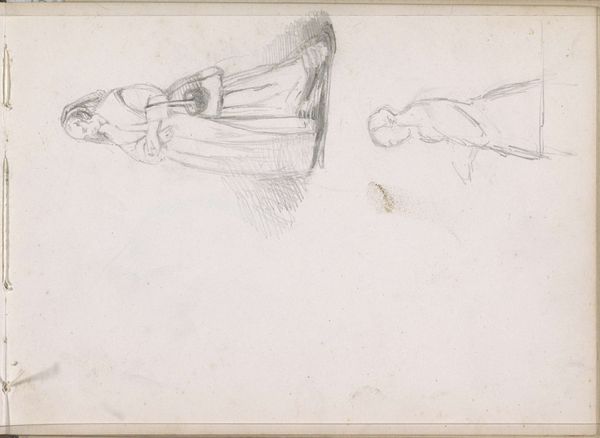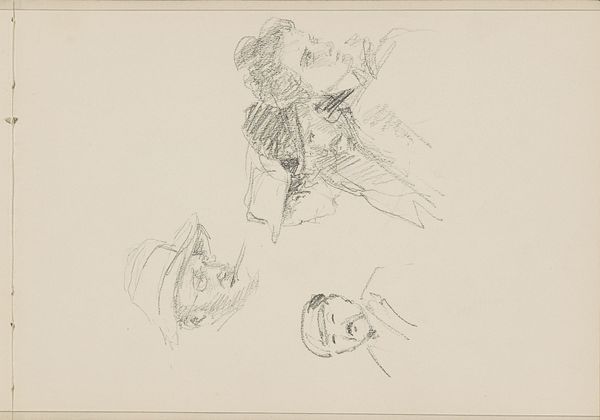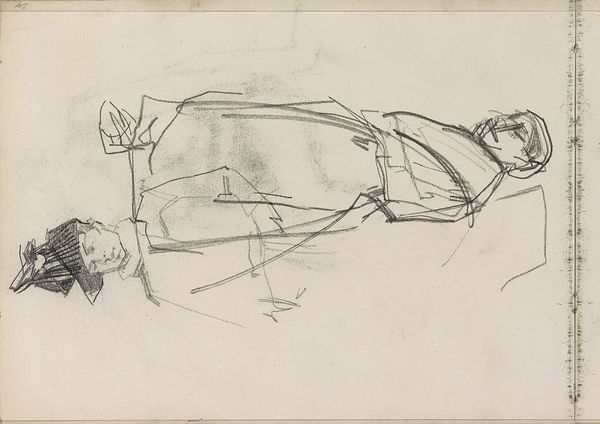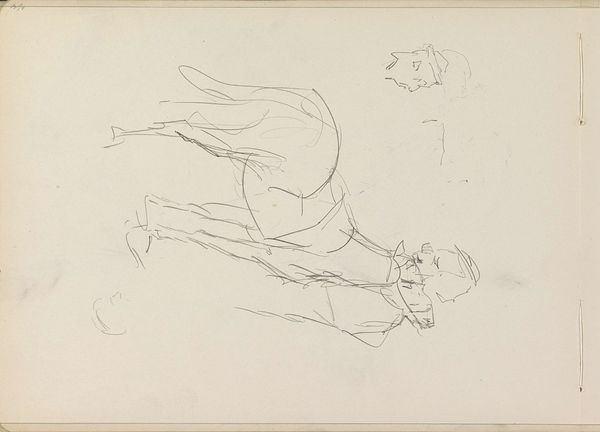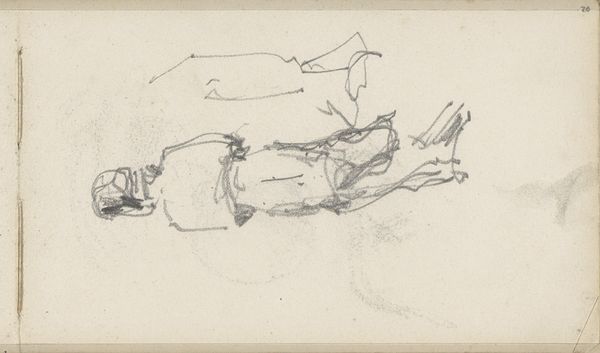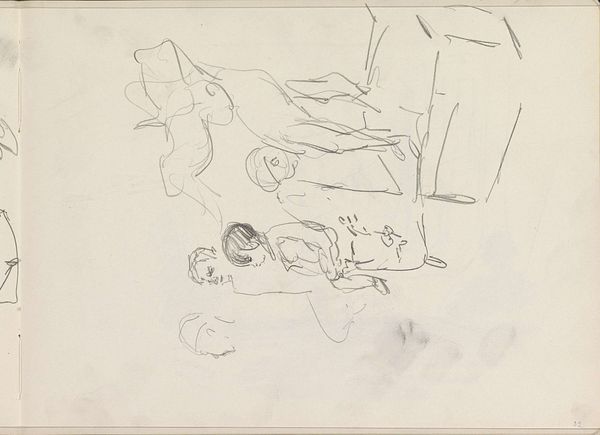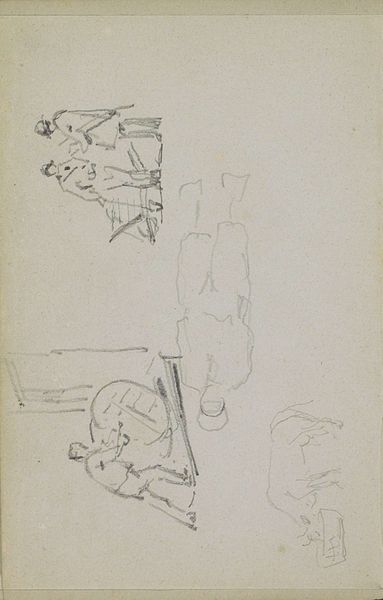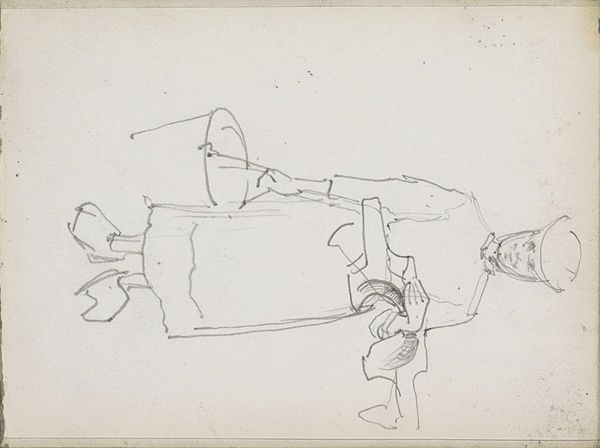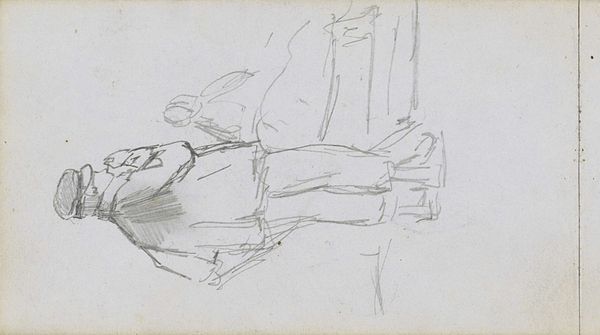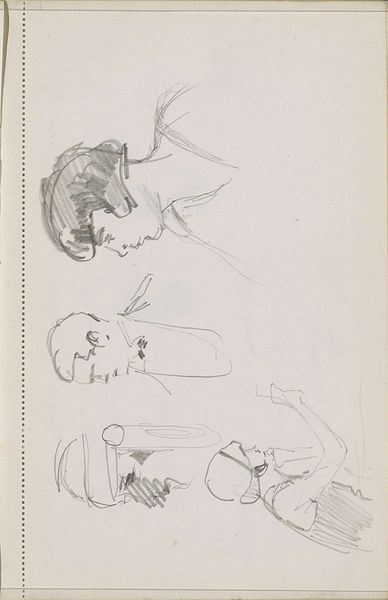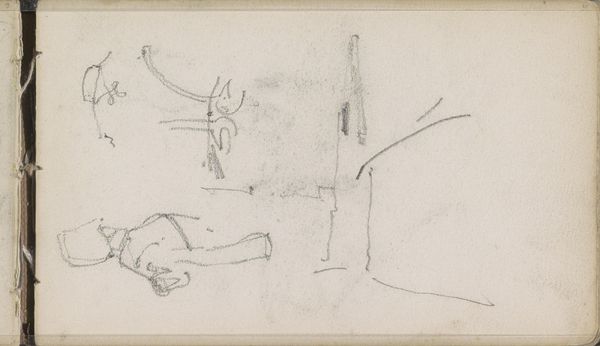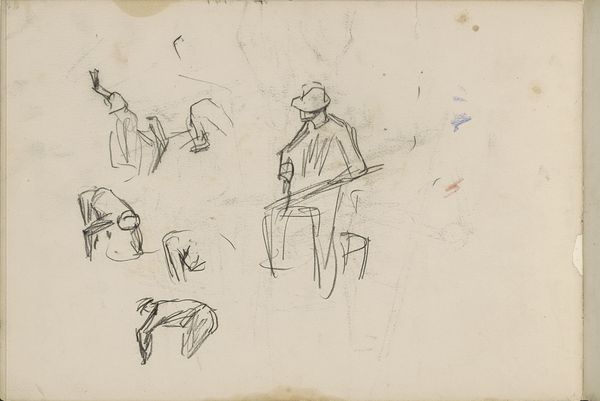
drawing, paper, pencil
#
portrait
#
drawing
#
amateur sketch
#
light pencil work
#
impressionism
#
landscape
#
figuration
#
paper
#
personal sketchbook
#
idea generation sketch
#
sketchwork
#
detailed observational sketch
#
sketch
#
pencil
#
line
#
sketchbook drawing
#
genre-painting
#
storyboard and sketchbook work
#
sketchbook art
#
initial sketch
Copyright: Rijks Museum: Open Domain
Curator: Looking at George Clausen's "Mannen in Volendamse klederdracht" from 1875, one immediately notices the spontaneous nature of the work. It's a pencil drawing, clearly a sketch, presenting multiple figures in what seems to be Volendam traditional attire. Editor: It strikes me as melancholic, even in its sketchiness. There’s a real sense of observation here, an attempt to capture the human form and maybe something more—perhaps the passing of tradition itself. The material quality is subdued, just pencil and paper, creating a sense of quiet introspection. Curator: Absolutely. Considering its time, it’s interesting how Clausen approaches the subject. He focuses on capturing details like the specific clothing. These garments would have been produced through local artisan work—weaving, tailoring—practices tightly bound to community identity. How does that resonate with your activist perspective? Editor: Precisely. Clothing has always been a potent signifier. By documenting the Volendam dress, Clausen captures not just an aesthetic but a whole cultural ecosystem on the verge of transformation by industrialization and the modern market economy. What does it mean to represent these men at this historical juncture, seemingly frozen in tradition, when everything around them is shifting? Curator: From my standpoint, these rapid sketches suggest the process of material reproduction that often happens when capturing and re-interpreting local cultures into commodity and later mass reproductions. You can find hints about that, for example, in some clothing shops today that target this very specific traditional folk culture. Editor: It highlights the tension between preserving cultural heritage and reducing identities to mere aesthetic consumption. The gaze of the artist is inherently part of that process, a filter. These sketches serve as records of how these people and their cultural expression are presented to an audience in a certain way and what purposes those presentations aim for. Curator: And that transformation continues, shifting not only the traditional costumes' creation methods but also how its perceived and used until today. Editor: Agreed, that context continues to change even to this day, so even a work like this can invite reflection of what the presentation of "tradition" means and entails.
Comments
No comments
Be the first to comment and join the conversation on the ultimate creative platform.
